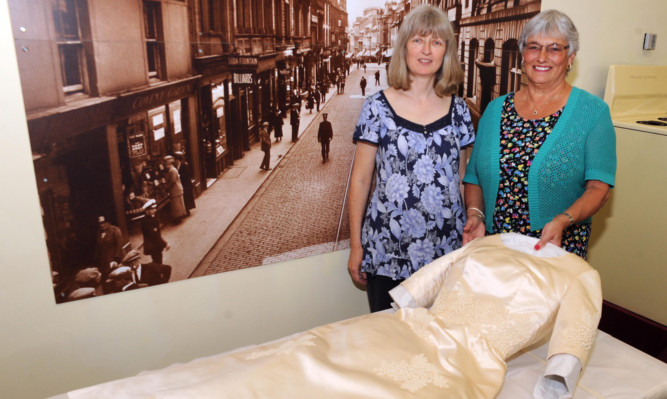Dunfermline’s planned new museum has woven some special memories of the town’s regal industrial past.
The new Dunfermline Museum and Galleries team played host to some special visitors when they invited former management and workers at the Winterthur Silk factory where the silk for the Queen’s wedding dress was woven to a small reunion in the Abbey Room in Dunfermline Carnegie library.
Now those memories will play a vital role in the £10 million museum due to open in 2016. Winterthur Silks was located in the former J & T Alexander Linen Mill at Canmore Works, and was one of three silk mills in Dunfermline.
It opened in 1932 and, along with the Fife and Dunfermline silk mills, the industry employed more than 750 people.
During the Second World War, 80% of the silk mill’s output was for the war effort, including the production of synthetic silk for parachutes.
However, it was weaving the silk for Princess Elizabeth’s wedding dress in 1947 that really put Winterthur on the map.
Joining the museum team to reminisce about the silk mill were Magdalena and Henry Bosshardt, whose father Walter Bosshardt was managing director, and Ernie Schellenberg, who was the factory manager at the time of Winterthur Silks’ takeover and eventual closure in 1970.
They were joined by former employee Helen Nugent and Lily Millar, whose father worked in the Winterthur factory.
Research and activities assistant Lesley McNaughton said: “It has been an absolute pleasure to meet everyone and share in some of their memories of the Winterthur silk mill. What they’ve brought with them, both in terms of information and things made of Winterthur silk, will make a big contribution to the quality of the new museum displays .
“These personal items and stories are what will make our museum so vibrant and engaging, and we are very committed to telling Dunfermline’s story through its own people.”
Photo by David Wardle
